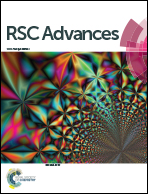Microscopic investigations on the healing and softening of damaged salt by uniaxial deformation from CT, SEM and NMR: effect of fluids (brine and oil)
Abstract
Nowadays, a salt cavern, used as underground energy storage (e.g. natural gas, crude oil, hydrogen), is becoming more and more popular in China due to its many advantages, such as low permeability (≤10−21 m2), good water-soluble mining and the damage-healing characteristic of salt rocks. It not only solves the problem of energy resource supply-demand imbalance in China, but also provides a better, more secure and cost-effective way to store energy compared to aboveground energy storage systems. As for salt cavern storage, permeability is our primary concern in engineering, which is mainly influenced by damage and healing. In this work, some damaged salt specimens were prepared by uniaxial compression tests (the loading rate was 0.033 mm s−1). Then those specimens were immersed in either a saturated brine solution or oil at 50 °C for a few days. Microscopic investigations were carried out by X-ray Computed Tomography (CT), Scanning Electron Microscope (SEM) and Nuclear Magnetic Resonance (NMR) to investigate the change of salt microstructures after healing. Possible micro-healing mechanisms were discussed. It was found that fluids played an important role in the healing process of damaged salt. Healing effectiveness of micro-pores and -cracks with the brine solution was higher than that with oil mainly because of crystal recrystallization. The surface of the grains was smooth and had no visible microcracks after healing in brine, while there were many pits and micro-tunnels with oil. Oil could hinder the healing process by impeding the diffusion effect and restraining grain recrystallization. Meanwhile, intragranular and intergranular water could also work as a lubricant resulting in softening which made salt rock more deformable. NMR results confirmed that damaged salt had a better recovery with brine, displaying lower porosity and lower permeability compared to that with oil. This work provides preliminary microscopic investigations on the healing of damaged salt in order to reveal the salt healing mechanism.



 Please wait while we load your content...
Please wait while we load your content...